-
-
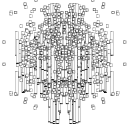 solipp
posted in news • read more
solipp
posted in news • read more@jyg said:
Did you re-upload the latest audiolab 0.71.1 ?
yes, i re-uploaded, thanks to this comment from IOhannes in the list:
what i can say is, that the "audiolab" package includes both a "LICENSE"
file and a "License/" directory.
this is not a problem on case-sensitive filesystems (like ext2/3/4 on
linux), but it cannot work on case-insensitive filesystems (like FAT32,
NTFS or HFS+).I was not aware of this and it was on my end to fix it, so thank you for bringing it up in the list!
Edit: the version number is the same, 0.71.1 because nothing has changed in the files except that LICENCE is now called LICENSE.txt.
If anyone else had issues with the install from deken, please try again.Thanks again for helping to clear this up!
-
 solipp
posted in news • read more
solipp
posted in news • read more@jyg hm so i just checked if i missed something and if it is actually common practice to share files on deken with group and global write permissions. But that doesn't seem to be the case, here is a part of
zipinfooutput of else-v1.0-0_rc14 for example:

Is installing else causing trouble for you?
Could it be that you are having this problems because you are logged in as admin, not as user or you are trying to unpack these files to a protected folder or something like this?If it helps i can re-upload the files with extra write permissions.
-
 solipp
posted in news • read more
solipp
posted in news • read more@jyg someone reported a similar issue with the deken installation on a Windows OS on github. I can not reproduce this on Linux and i don't know what could be causing it, so my suspicion was that it is somehow related to Windows security permissions. Are you using Windows? Does this happen with other libraries as well? Unfortunately, there is not much i can do about it, but i'll test as soon as i have access to a Windows machine.
For now, if you want to stay up to date you can download from github and set the path manually in pd settings.Edit: just saw that you created another issue about this on github. I'll close it because it is not related to the development of this library, but we can continue the conversation here.
-
 solipp
posted in news • read more
solipp
posted in news • read more@jamcultur thanks! You can save any of these objects with a message [save 1( to the rightmost inlet. Then use [recall 1( to retrieve your parameter settings. You can save up to 21 presets this way. This is also documented in the help files and in Examples/01-basics.pd
-
 solipp
posted in technical issues • read more
solipp
posted in technical issues • read moreyou can find the paf~ external in one of the pieces that Miller shares with the Pure Data Repertory Project (in /externs/paf~/):
https://msp.ucsd.edu/pdrp/latest/manoury-enecho.tgz -
 solipp
posted in technical issues • read more
solipp
posted in technical issues • read more@Moothart i never used [abl-link~], so i don't know how it behaves exactly. You can try something like this maybe

or use the set method for change (check the helpfile) -
-
 solipp
posted in technical issues • read more
solipp
posted in technical issues • read moreyou can also [del 0] or just [del] like this:
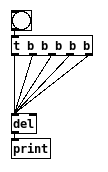
however, this will force any bang to come last in the trigger order. If you rely on trigger in this part in your patch you'd need another [del] to correct it:
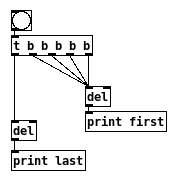
-
 solipp
posted in news • read more
solipp
posted in news • read moreVersion 0.70 is now available on deken.
I added some simple but convenient objects:
pp.amp~ a simple signal multiplier
pp.adsr~ adsr/adr envelope generator
pp.xfade~ signal crossfader
pp.shiftlfo~ a LFO that can generate irregular rhythmic patternspp.dynamics~ now has an option to enable feedback compression
Some parameter sliders are now colored light orange in the GUI. This indicates that the slider does not cover the full range of the parameter and is intended to encourage experimenting with values that are above or below the range of the slider.
fixed some minor bugs.
Happy patching!
-
 solipp
posted in news • read more
solipp
posted in news • read more@qhr33k Thanks!
about this sidechain thing; yes you would need to feed the compressor an audio signal and use the sidechain output to let's say duck the tail of a reverb (that's just an example, you can do whatever you want with this). In this case you would multiply the 100% wet reverb with the signal from the sidechain outlet of the compressor like this:
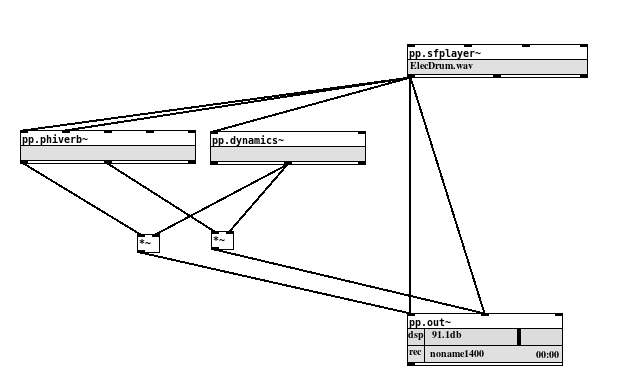
sidechain_compression.pdThe presets are more or less didactic, you can use them as a starting point and then change the parameters until they fit your needs. In the case above you'd use the "compress" preset. I think what confuses you is the preset "Env.follow(sidechain)". This one is an envelope follower, the comment (sidechain) hints that the envelope is the signal from the sidechain outlet. Hope that makes sense?
-
 solipp
posted in technical issues • read more
solipp
posted in technical issues • read moreI feel a bit like the "spray everywhere" solution would require more object copy/paste -- mine just has "; next symbol instr1" where the other needs a [t], a [s], a [r], and an [f].
well, you can wrap it into a subpatch and copy/paste that : )
Essentially both methods are not complicated, they just have to be implemented in a low level language as @oid pointed out. -
 solipp
posted in technical issues • read more
solipp
posted in technical issues • read morereading this thread, what i understand so far is this is about calling some function, store its output and retrieve it at a given point... Something like this in pd?
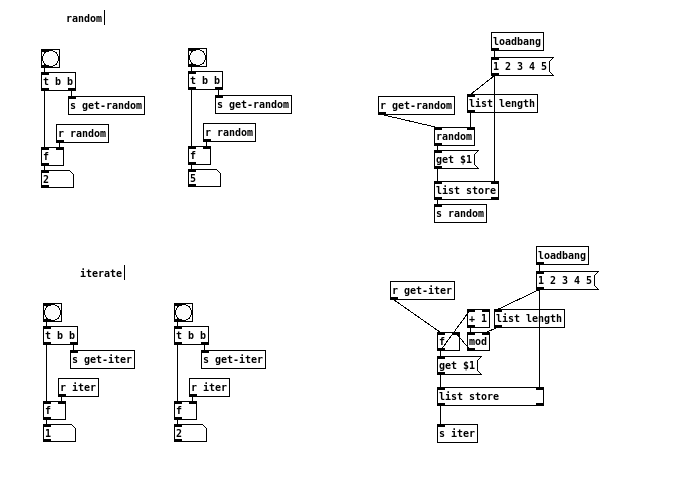 do i miss something?
do i miss something?
` -
 solipp
posted in technical issues • read more
solipp
posted in technical issues • read morei made this abstraction a while ago bezier.zip. There is also an abstraction "pp.xycurve" to draw and read from 2d bezier curves in the audiolab library: https://forum.puredata.info/topic/12334/audiolab-is-now-available-on-deken
-
 solipp
posted in technical issues • read more
solipp
posted in technical issues • read more@morast did you try the pp.spat8~ mentioned above? It's an vanilla abstraction and should run in an up to date pd version on a raspberry without issues.
You can find it in the deken repos (help -> find externals -> search for audiolab)Check it's helpfile, there is a signal controlled spread parameter. Not sure if that is what you mean by widening function.
-
 solipp
posted in news • read more
solipp
posted in news • read moreA new version is now available on deken, v0.63.
added 2 new objects:
pp.pantd~ stereo panner with time delay
pp.grainer-mc~ a granular sampler with multi-channel signal outletA new example 15-train_of_sounds.pd showcases the use of some audiolab abstractions with pd's multi-channel signal connections.
Example 14-glitchfest.pd is also new and just a lot of fun to play around with.fixed some bugs as well.
Happy patching!
-
 solipp
posted in news • read more
solipp
posted in news • read more@porres
It is based on this talk by Geraint Luff:
However, the basic structure is the same as in rev3~, early reflections are fed into a 16-channel fdn. Delay times are selected from a table of prime numbers. The "secret" lies in the mixdown of the 16 fdn channels to stereo. It was more or less trial and error, adding and subtracting the signals and listening what sounds good.

